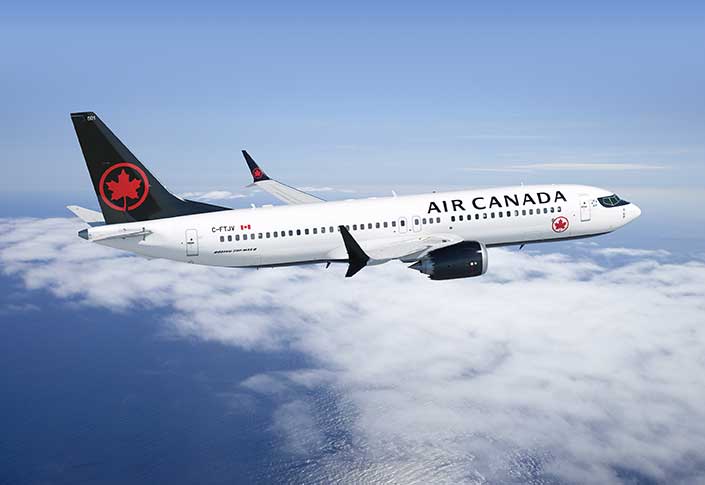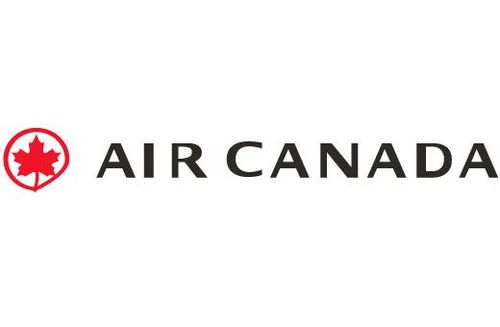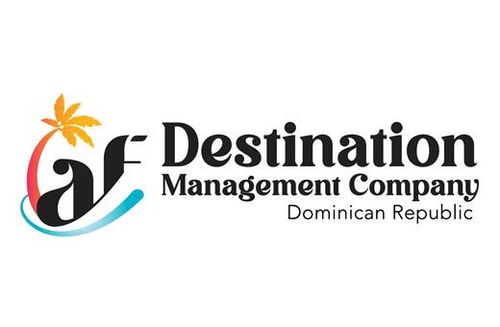Where travel agents earn, learn and save!
News / Air Canada reports third quarter 2020 results
Total passengers carried declined 88% due to COVID-19 and travel restrictions

November 9 - Total revenues of $757 million in the third quarter of 2020 declined $4.773 billion or 86 per cent from the third quarter of 2019. The airline reported third quarter 2020 negative EBITDA(1) or (earnings before interest, taxes, depreciation and amortization), excluding special items, of $554 million compared to third quarter 2019 EBITDA of $1.472 billion.
Air Canada reported an operating loss of $785 million in the third quarter of 2020 compared to operating income of $956 million in the third quarter of 2019. Total revenue passengers carried declined 88 per cent in the quarter compared to last year’s third quarter. Unrestricted liquidity amounted to $8.189 billion at September 30, 2020.
Air Canada has taken or will be taking the following measures as part of its COVID-19 Mitigation and Recovery Plan:
Customer Service and Safety
• Air Canada makes safety its first consideration in all that it does and has been continually updating its health and safety policies and procedures for travellers and employees in all workplaces, airports, and onboard aircraft to account for new information about COVID-19 as it becomes available. This includes a requirement for customers to wear a protective face covering, as well as enhanced protective personal equipment for airport agents and crews, the reinforcement of safe practices such as frequent hand-washing and collaborating with the Canadian federal government to screen passengers to help determine fitness for flying• To underscore its commitment to customer and employee safety, Air Canada introduced Air Canada CleanCare+. This program is designed to reduce the risk of exposure to COVID-19 through such measures as enhanced aircraft grooming, mandatory preflight customer temperature checks in addition to required health questionnaires and providing all customers with care kits for hand cleaning and hygiene
• Air Canada has undertaken several medical collaborations to continue advancing biosafety across its business, including with Cleveland Clinic Canada in Toronto, a renowned global healthcare leader, to provide additional science-based evidence in Air Canada’s ongoing COVID-19 response; with Ottawa-based Spartan Bioscience to explore rapid COVID-19 testing in an aviation environment; and since last year with Toronto-based BlueDot, a company that monitors infectious diseases globally in real time to give us accurate, relevant information to make business and safety decisions quickly
• Air Canada has been partnering with McMaster HealthLabs and the Greater Toronto Airports Authority in a study of international travellers arriving at Toronto Pearson International Airport. Preliminary results indicate that testing can provide an effective, responsible alternative to facilitate the safe relaxation of quarantines
• Air Canada recently announced that it was finalizing an initial order of Abbott’s ID NOW COVID-19 rapid response tests as part of its ongoing evaluation of COVID-19 testing technology and protocols, one of the first private sector companies to do so
• Air Canada also recently announced plans to explore the application of COVID-19 contact tracing technology in its workplace using the Bluetooth enabled TraceSCAN app and wearable technology developed by Canadian-based Facedrive Inc
• To meet the demand for the global transport of goods, including personal protective equipment during the pandemic, Air Canada operated more than 3,000 all-cargo international flights since March 22, 2020, and plans to operate up to 100 all-cargo flights per week in the fourth quarter of 2020 using a combination of Boeing 787 and Boeing 777 aircraft as well as four converted Boeing 777 and three converted Airbus 330 aircraft where it has doubled available cargo space by removing seats from the passenger cabin
• Air Canada announced special benefits and accommodations for Aeroplan and Altitude members in light of COVID-19. These include pausing mileage expiration, grandfathering mileage-earned status, waiving certain change and redeposit fees, and launching new promotions so that members can earn additional Aeroplan Miles without leaving home
Capacity and Route Network
• Air Canada reduced second and third quarter 2020 ASM capacity by 92.0 per cent and 81.7 per cent, respectively, compared to the same quarters in 2019, and plans to reduce fourth quarter 2020 capacity by approximately 75 per cent compared to the fourth quarter of 2019. The airline will continue to dynamically adjust capacity and take other measures as required to adjust for demand, including as a result of health warnings, travel restrictions, quarantines, border closures and passenger demand• On June 30, 2020, Air Canada suspended service indefinitely on 30 domestic regional routes and closed eight stations at regional airports in Canada
Financing and Liquidity
• In March 2020, Air Canada drew down its US$600 million and $200 million revolving credit facilities for aggregate net proceeds of $1.027 billion• In June 2020, Air Canada concluded an underwritten marketed public offering of 35,420,000 voting shares of Air Canada at a price of $16.25 per share for aggregate proceeds of $576 million, and a concurrent marketed private placement of convertible senior unsecured notes due 2025 for aggregate proceeds of US$748 million ($1.011 billion)
• In June 2020, Air Canada completed a private offering of $840 million aggregate principal amount of 9.00 per cent Second Lien Secured Notes due 2024, which were sold at 98 per cent of par
• In June 2020, Air Canada completed a private offering of one tranche of Class C Enhanced Equipment Trust Certificates (EETCs) with a combined aggregate face amount of approximately US$316 million ($426 million), which were sold at 95.002 per cent of par
• In September 2020, Air Canada concluded a private offering of two tranches of EETCs, the proceeds of which were used to purchase equipment notes issued by Air Canada and secured by three Boeing 787-9 aircraft, three Boeing 777-300ER aircraft, one Boeing 777-200LR and nine Airbus A321-200 aircraft. The two tranches of certificates have a combined aggregate face amount of US$553 million ($740 million) and a weighted average interest rate of 5.73 per cent. Air Canada used the proceeds from this financing together with cash on hand to repay in full the US$600 million ($803 million) 364-day term loan originally put in place in April 2020 and discussed in Air Canada’s second quarter 2020 MD&A
• In September 2020, Air Canada concluded a committed secured facility totaling $788 million to finance the purchase of the first 18 Airbus A220 aircraft. As aircraft are financed under this new Canadian dollar facility, the bridge financing of $788 million put in place in April 2020 (and discussed in Air Canada’s second quarter 2020 MD&A) will be repaid concurrently. At September 30, 2020, nine Airbus A220 aircraft were financed under this facility with the corresponding bridge financing repaid
• In early October 2020, Air Canada announced that it had completed sale and leaseback transactions for nine Boeing 737-8 aircraft for total proceeds of US$365 million ($485 million). The nine aircraft were delivered to Air Canada in the past three years
• Air Canada’s unencumbered asset pool (excluding the value of Aeroplan, Air Canada Vacations and Air Canada Cargo) amounted to approximately $1.8 billion following the closing of the transactions discussed above. As part of Air Canada’s ongoing efforts to maintain adequate liquidity levels, additional financing arrangements continue to be assessed
• Air Canada suspended share purchases under its Normal Course Issuer Bid in early March 2020 and did not renew its issuer bid upon its expiry in the second quarter of 2020
Cost Reduction and Capital Reduction and Deferral Program
• Air Canada initiated a company-wide cost reduction and capital reduction and deferral program for 2020, which has now reached approximately $1.5 billion, increased from an initial target of $500 million. On a capacity reduction of 81.7 per cent, third quarter 2020 operating expenses decreased $3.032 billion or 66 per cent from the same quarter in 2019, reflecting the significant progress made on both managing variable costs and reducing fixed expenses. Air Canada continues to seek additional opportunities for cost reduction and cash preservation• Air Canada announced a workforce reduction of approximately 20,000 employees, representing more than 50 per cent of its workforce. This was achieved through layoffs, terminations of employment, voluntary separations, early retirements and special leaves
• Air Canada adopted the Canada Emergency Wage Subsidy (CEWS) for most of its workforce effective March 15, 2020. In July 2020, the program was redesigned and extended until December 2020. In September 2020, the Government of Canada announced a further extension of the program to June 2021. Air Canada intends to continue its participation in the CEWS program for active employees, subject to meeting the eligibility requirements
• Air Canada is permanently retiring 79 older aircraft from its fleet – consisting of Boeing 767, Airbus A319 and Embraer 190 aircraft. Their retirement will simplify the airline’s overall fleet, reduce its cost structure, and lower its carbon footprint
• Air Canada concluded an amendment to the purchase agreement for Airbus A220-300 aircraft which became effective in early November 2020. As a result, Air Canada has deferred 18 aircraft deliveries over 2021 and 2022 and will not be purchasing the last 12 Airbus A220 aircraft. Air Canada expects to take delivery of five Airbus A220 aircraft in the fourth quarter of 2020
• In early November 2020, Air Canada also amended its agreement with Boeing to cancel 10 Boeing 737-8 aircraft deliveries from its firm order of 50 aircraft and to defer its remaining 16 aircraft deliveries over the late 2021 to 2023 period
• Through this fleet restructuring and other capital reduction initiatives, Air Canada successfully lowered its planned capital expenditures by approximately $3.0 billion for the 2020 to 2023 period compared to its projected capital expenditures at the end of 2019
Third Quarter Summary
Air Canada recorded a net loss of $685 million or $2.31 per diluted share compared to net income of $636 million or $2.35 per diluted share in the third quarter of 2019.
At September 30, 2020, net debt of $4.973 billion increased $2.132 billion from December 31, 2019, reflecting the impact of net cash used for operating and investing activities in the first nine months of 2020. The unfavourable impact of a weaker Canadian dollar, at September 30, 2020 compared to December 31, 2019, increased foreign currency denominated debt (mainly U.S. dollars) by $141 million.
In the third quarter of 2020, net cash flows used in operating activities of $286 million deteriorated by $1.120 billion from the same quarter in 2019 on lower operating results, reflecting the impact of the COVID-19 pandemic.
In the third quarter of 2020, net cash used in financing activities amounted to $332 million, an improvement of $33 million from the third quarter of 2019. Net proceeds from debt financings amounted to $1.101 billion. Reduction of long-term debt and lease liabilities of $1.433 billion in the third quarter of 2020 included lump-sum repayments of $1.177 billion.
In the third quarter of 2020, net cash flows used in investing activities of $644 million reflected an increase of $554 million from the third quarter of 2019, mainly due to movements between cash and short and long-term investments.
In the third quarter of 2020, net cash burn(1) of $818 million (or approximately $9 million per day, on average) was significantly better than management’s net cash burn expectations of between $1.35 billion and $1.6 billion (or between $15 million and $17 million per day, on average). This was due to a number of factors, including the deferral of certain capital expenditures, higher cash receipts related to the CEWS program, and additional working capital benefits resulting from both a deferral of supplier payments into future periods and from income and sales tax recoveries which had been forecast to occur in later periods.
Outlook and Major Assumptions
As indicated above, Air Canada plans to reduce its fourth quarter 2020 capacity by approximately 75 per cent from the same quarter in 2019. The airline will continue to dynamically adjust capacity and take other measures as required to account for health warnings, travel restrictions, quarantines, border closures globally and passenger demand.
Air Canada projects net cash burn of between $1.1 billion and $1.3 billion (or between $12 million and $14 million per day, on average) in the fourth quarter of 2020. This net cash burn projection includes $4 million per day in capital expenditures and $5 million per day in lease and debt service costs. When compared to the third quarter of 2020, the higher projected net cash burn in the fourth quarter of 2020 is due to a number of factors, including an increase in end-of-lease payments due to more aircraft being returned to lessors, stabilization of supplier payment deferrals affecting working capital, lower cash receipts related to the CEWS program, and a higher level of capital expenditures, in part due to additional scheduled Airbus A220 aircraft deliveries.
As discussed above, the Honourable Marc Garneau made public statements on November 8, 2020 related to aviation industry sector-specific support. Air Canada will provide an update when Government of Canada support arrangements have been finalized.
For more information, please visit aircanada.mediaroom.com
More Travel News:
Porter Airlines adjusts planned restart date
Continued increase in Cancun flights reinforces forecasts of busy winter season
NACC comments on the Canadian government’s decision to begin discussions with major airlines on pandemic support
Transat Distribution Canada launches TDC Campus








